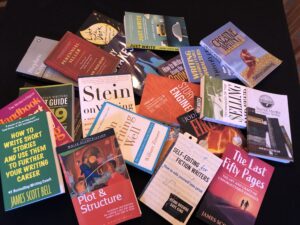
I can’t change the direction of the wind, but I can adjust my sails to always reach my destination. –Jimmy Dean
* * *
Did you know the deadliest aviation accident in history happened on the ground? Yes, you read that correctly. It occurred in 1977 when two 747’s collided in dense fog on a runway in the Canary Islands. Here’s how it happened:
An incident at the airport on Gran Canaria Island had diverted aircraft to the smaller Los Rodeos Airport on Tenerife Island. The Los Rodeos Airport had only one runway and an adjacent parallel taxiway with several smaller taxiways connecting the two. Because of the increase in aircraft that had landed at Los Rodeos, several aircraft were parked on the taxiway.
Two 747’s were lined up at one end of the taxiway, ready to depart. A KLM aircraft was to be first, followed by a PanAm flight. Because of the wind direction, each aircraft would have to move from its current position to the opposite end of the runway, but they couldn’t use the main taxiway because it was blocked by other aircraft.
An air traffic controller in the Los Rodeos tower instructed the KLM plane to taxi down the runway to the end and turn 180° in preparation for takeoff. While the KLM plane was taxiing, the controller told the PanAm plane to taxi on the same runway (which would put it behind the KLM) and then exit at a connecting taxiway. That way, the PanAm plane would be off the runway before the KLM started its takeoff roll.
Because of the fog, the crews of the two planes could not see each other, and the air traffic controller could not see the planes. They were relying on accurate communication to guide their movements. If the crews of both planes had obeyed the controller’s instructions, the accident would not have happened.
The KLM completed its taxi and turning maneuver and was positioned at the end of the runway. Now, an aircraft must have specific clearance from ATC before starting its takeoff roll. The tower never gave the KLM flight clearance to take off, but the captain of the KLM plane thought he had been given the okay. Because of his misunderstanding and his inability to see clearly, the giant 747 began barreling down the runway, unaware that the other plane was in its path.
The takeoff plane was traveling at approximately 160 mph when the crew spotted the other plane dead ahead. They were only one hundred meters apart. There was no time to stop or swerve to avoid the other plane. The captain of the takeoff plane pulled the nose up sharply in an effort to “leapfrog” over the other one. He didn’t make it. The lower part of the KLM aircraft struck the PanAm plane and crashed onto the runway, exploding in a huge fireball.
Although the crews of both planes were experienced, five hundred and eighty-three people died in that accident. All the people on the KLM flight perished, and most of the passengers on the PanAm plane also died. And it happened because the captain of the KLM plane lacked “situational awareness”, or the ability to fully understand his environment. He acted on an assumption that the runway was clear. He was wrong.
* * *

Situational awareness applies to many aspects of life, not just flying. Fortunately for authors, lack of such an awareness will not endanger our lives, but it just might endanger our livelihoods!
So what is situational awareness for writers? Most writers (I hope) know what they want out of writing. It may be fame, financial success, independence, self-fulfillment, a way to touch other people’s lives, or just the experience of writing a very good book. But in order to achieve his/her goals, the writer has to know what the current landscape is. After all, if you don’t know where you are, how can you figure out how to get where you’re going?
If you’re a pilot, you depend on the air traffic controller to direct your flight. When you drive, you may use your car’s GPS system to get you to your destination. For those of us who are new to publishing, we rely on experts in the field to lead us. Add to that the notion that the publishing world keeps shifting beneath our feet, it’s more important than ever to be well-informed.
When I began writing my first novel, I understood early on that I needed an editor/mentor to help guide me. Imagine my surprise when she told me my omniscient narrator was out of style and I’d have to take a different approach. After I got over my “Well, it’s my book and that’s the way I want to do it” reaction, I realized I didn’t understand the big picture of where I was in this new world. I needed a map.
Fortunately for me, the first two resources that were recommended to me were Plot and Structure by James Scott Bell and Self-editing for Fiction Writers by Renni Browne and Dave King. Along with my editor, these books laid the groundwork for my moving forward.
Luckily, authors have an abundance of good information in craft books, podcasts, blogs, and a semi-infinite number of online resources. The information is there. We just have to take advantage of it.
Whatever methods you use to get you where you want to go, best wishes for a successful journey and a happy landing!

* * *
So TKZers: What are your writing goals? What tools do you use to get you to your destination? Books? Blogs? Podcasts? Courses?
* * *
 Private pilot Cassie Deakin has her feet firmly planted in the air. But when she lands on the ground and has to help disentangle a murder mystery, the landscape isn’t nearly so friendly.
Private pilot Cassie Deakin has her feet firmly planted in the air. But when she lands on the ground and has to help disentangle a murder mystery, the landscape isn’t nearly so friendly.
Buy on Amazon, Barnes & Noble, Kobo, Google Play, or Apple Books.

You’re so right, Kay that situational awareness applies to writing (which thankfully isn’t dangerous like flying or driving are, for instance), and that where it is centered depends on what our particular writing goals *are*. Those goals can of course change with time and experience.
When I began walking the “path of writing craft” my goal was learning storytelling, studying books like “Scene and Structure,” “Story”, and a number of JSB’s books, especially “Write Your Novel from the Middle,” as well as attend several writing classes and numerous one and two day workshops, and listen to many episodes of the Writing Excuses Podcast.
Years later, in 2016, when I decided to become an indie, I focused on learning marketing and publishing. I read David Gaughran’s books, my friend Dr. Susan Kaye Quinn’s “For Love or Money” (now unavailable), and listened to the “Marketing Science Fiction and Fantasy” podcast (which I ended up being on in late 2017), “Wish I’d Known Then” podcast, and “Six Figure Authors,” among others.
Now my writing goals are to write from both sides of my brain rather than let the Left-side continue to solely run things. Bradbury’s “Zen in the Art of Writing,” Rand’s “From Idea to Story in 90 Seconds,” Rico’s “Writing the Natural Way,” all focus on that. Then there’s focusing my mindset on the part I can control, namely my writing. With that goal, Kelleher’s “Breakthrough” and Wendig’s “Gentle Writing Advice” have been hugely helpful. Finally, Matt Bell’s “Refuse to Be Done” offers a different process than I’ve used for my published novels which, while I may not adopt it whole sale, has been inspiring and thought-provoking.
Hope you have a wonderful week. Happy writing!
Morning, Dale!
Great comment. It sounds like you’re taking advantage of all the navigational aids available to you.
I’m also a left-brainer, so your comment about using both sides of the brain hits home. I haven’t read any of the books that you mention in relation to that, so thanks for the suggestions.
Have a great week.
Goodness, what a terrible aviation accident! For my writing “situational awareness,” I study the craft a little each day. How-to books are my friend.:-)
Good morning, Priscilla.
Yeah, this is not a happy story, but sometimes the most important lessons are learned in bad experiences. Many changes were made to aviation procedures and communication after that disaster.
You’ve inspired me by saying you study the craft a little every day. That’s probably the best way to learn. I think I’ll make it a goal to read at least a chapter in a craft book every day. Thanks!
There was an old saying among us aircraft mechanics a/k/a knuckledraggers that “ASSUME makes an ass out of you and me”. I learned a lot working on aircraft engines for twelve years, part of which was never assume anything because people’s lives are in your hands. I thank G-d nobody ever got hurt because of what I did, or neglected to do.
The detail oriented aspect of it colors my writing.
I’ve heard that same saying many times, Robert.
I worked for IBM on the computerization of the Air Traffic Control system years ago. Knowing one’s work could have serious consequences makes you pay attention. As far as I know, that system never caused any accidents or incidents.
Excellent observations, Kay! This post dovetails nicely into tomorrow’s post about three things I wish I had known when I was first on the self-publishing runway.
Goals have changed over 35+ years. Some were unrealistic; others were realistic but unattainable; still others took me down the wrong taxiway but fortunately I was able to turn around w/o crashing. These days, I want to do more teaching at conferences, editing, and podcast appearances.
To add to your already-solid list, craft books that were esp. helpful include ones by Jack Bickham. Larry Brooks, H.R. D’Costa’s Story Stakes, and too many more to list. Writers are lucky to have a treasure trove of info at our fingertips.
The shifting publishing world makes it difficult to keep up. The daily Authors Guild discussion group touches on a wide variety of trending topics like AI, marketing, and best practices. Those often lead me down productive rabbit holes that add to my ongoing education.
Jane Friedman, Anne R. Allen & Ruth Harris, Gary Marcus (AI expert) are standbys I rely on. Recently I discovered Substacks by Kathleen Schmidt (publishing) and Jeffrey Yamaguchi (marketing).
Online classes sponsored by Authors Guild and International Thriller Writers are terrific.
So much education, so little brain to absorb it all!
Thanks for another thought-provoking post, Kay.
Good morning, Debbie, ,and thanks for the great suggestions.
I hope we both land at the same writers conference one of these days. I will definitely take your class.
Speaking of teaching, I’m giving a talk entitled “The Author’s Journey: From Concept to Publication and Beyond” later this week at a writers group. (The title was inspired by The Hero’s Journey and your upcoming The Villain’s Journey.) Preparing a course or a talk is probably the best way to learn something.
Have a great week.
So true, Kay. If you really want to learn something, teach it.
Good luck with your talk–I know it will be excellent!
Thanks for the shout out, Kay. I’d been told in college you can’t learn to write fiction from “how to” books. So I never read them, and my writing fell flat. I stopped trying. Then there came a day when I had to try again, and I started cracking open the books and what do you know? I learned, and it was oh so satisfying to do so. Whenever I look at one of those early craft books I read and highlighted, I get excited all over again.
Good morning, Jim.
Plot & Structure and Self-editing got me off the runway and into the air. Both are quite colorful with my yellow highlighting and Frank’s red pen underlinings.
Great post, Kay
Goals: To enjoy writing and not fret over all the goals I am not achieving. To help other writers where I can. To create a middle grade – YA series for my grandchildren.
Tools: all the above (from your question). I try to read a craft-of-writing book along side of a fiction title. And I attempt to use other creative endeavors to stimulate ideas for my writing.
Thanks!
Good morning, Steve.
I love that you writer your middle grade fantasy series for your grandchildren. What a gift!
I also like how you use your wood-working talent to complement your writing. I suspect there are a lot of similarities between the two.
Have a great week.
What a great hook of a story, Kay. I couldn’t stop reading it.
Added to many of the resources mentioned here, near the top for me is The Kill Zone!
Good morning, Harald, and thanks for the kind words.
I agree. The Kill Zone is a wonderful resource. I’ve learned so much from the posts and comments over the years.
Have a great week.
Our bookshelf looks a lot alike, Kay. Craft books and an awesome writing coach (Larry Brooks) helped my writing to take off. Writers are such generous folks. We’re blessed.
So true, Sue. The writing community is the best.
I’m late to the discussion, Kay. Nice piece and very relevant to the writing world. Things change so fast – new tech (can you say AI) – new publishing platforms – new genres (cross-genre is breaking out) – today’s writers have to be almost hyper-aware of the situation so as to compete, never mind try to lead (sell).
In a former life, I did some high-risk stuff and I look back at why I got selected. I remember an instructor saying “team player with situational awareness”. Now it makes sense. As someone in this thread said – the writing community is so supportive (team) to alerting us (situationally aware) of changes.
Hi Garry,
I love “… the writing community is so supportive (team) to alerting us (situationally aware) of changes.” Very perceptive. I can’t imagine any place else I’d rather be.
Have a great week.